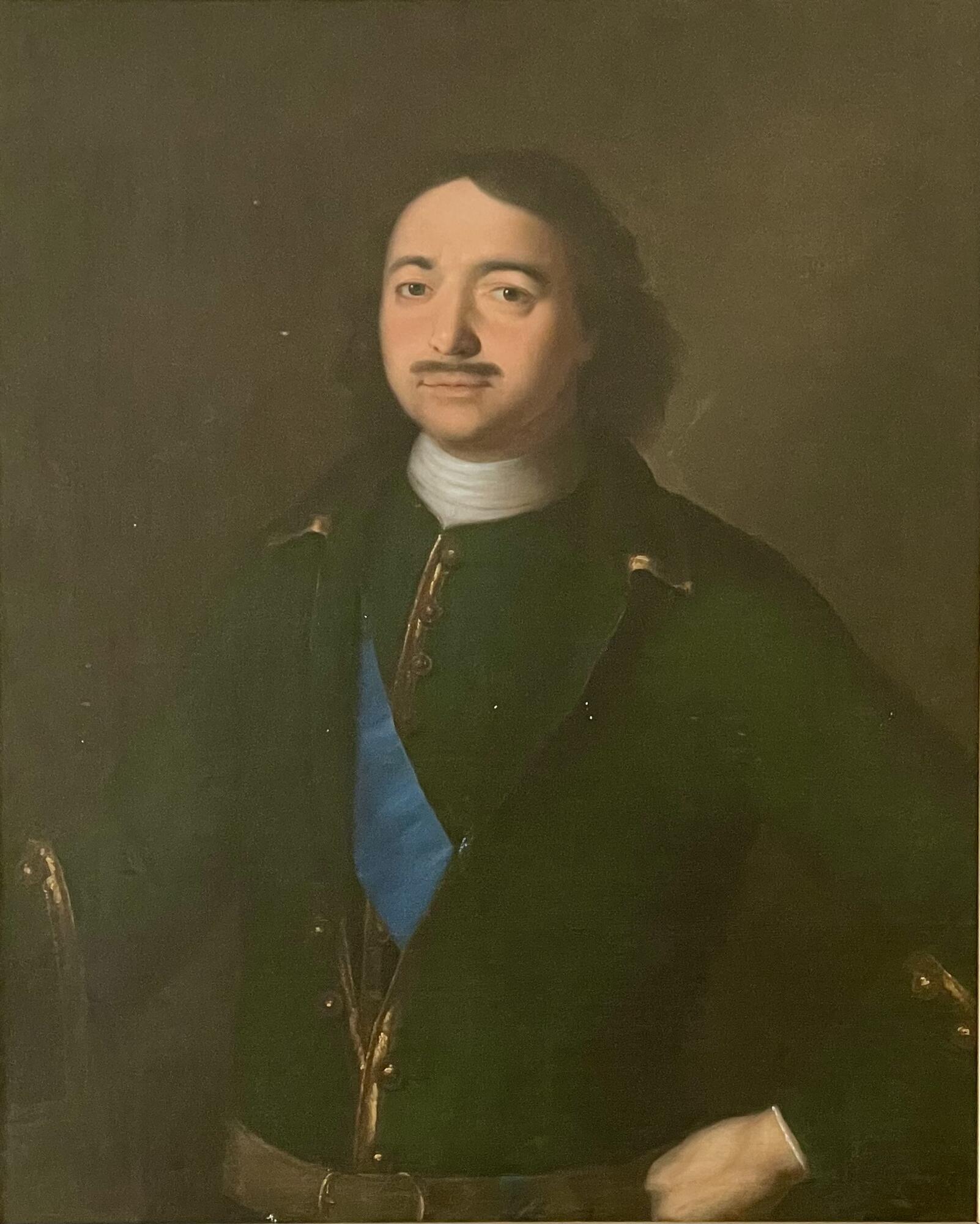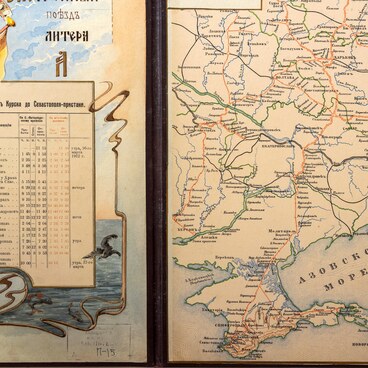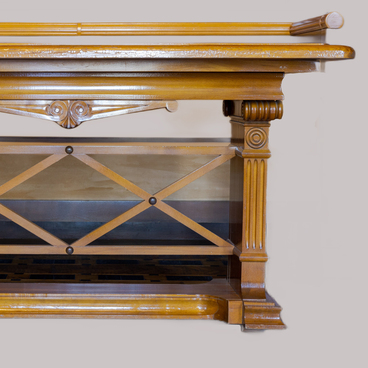The art collection of the Livadia Palace Museum presents a painting by an unknown 19th-century artist — a half-length portrait of Peter the Great, the future Emperor and Autocrat of All the Russias.
The portrait shows Tsar Peter I as an adult and emphasizes his calm and manly face without any youthful features. Another important aspect is that the painting lacks the official tsar attributes that should reflect his sovereign status. This portrait is an exception to the general tradition, which implies depicting Peter either in armor, reflecting his extensive combat experience, or with the sovereign emperor’s attributes. The painting bears some resemblance to an engraving by the artist Adrian Schonebeck, which is dated 1700–1704. Works created from 1711 onwards generally show Peter the Great as a grown man, with age-related changes like visible nasolabial folds on his face and wrinkles in the upper part of the forehead. Given this, it can be presumed that this portrait depicts Peter at the age between 32 and 36 and was most likely painted sometime between 1704 and 1708.
The tsar is dressed in a dark green uniform, embroidered with golden lace along the edges. A white scarf is tied around his neck. His left arm is bent at the elbow and rests on his belt. His right arm is slightly outstretched and seems to be leaning on something. Peter is wearing a blue order ribbon over his shoulder. Identifying it does not seem possible, but it can be assumed that this ribbon is part of the Order of Andrew the Apostle the First-Called. The difficulty is that the Russian autocrat was also awarded foreign orders, such as the Danish Order of the Elephant and the Polish Order of the White Eagle. However, the statute of the Danish order did not imply wearing it with other foreign orders, and the ribbon of the Polish order was supposed to be worn over the left shoulder. The tsar received the Order of St. Andrew the First-Called in 1703 after capturing two Swedish warships at the mouth of the Neva River. That same year Peter founded Saint Petersburg — the new capital of the Russian state.
Emperor Peter the Great went down in history as the sovereign who introduced unprecedented reforms to bring the country into the international political arena and develop Russian secular education and art.
The portrait shows Tsar Peter I as an adult and emphasizes his calm and manly face without any youthful features. Another important aspect is that the painting lacks the official tsar attributes that should reflect his sovereign status. This portrait is an exception to the general tradition, which implies depicting Peter either in armor, reflecting his extensive combat experience, or with the sovereign emperor’s attributes. The painting bears some resemblance to an engraving by the artist Adrian Schonebeck, which is dated 1700–1704. Works created from 1711 onwards generally show Peter the Great as a grown man, with age-related changes like visible nasolabial folds on his face and wrinkles in the upper part of the forehead. Given this, it can be presumed that this portrait depicts Peter at the age between 32 and 36 and was most likely painted sometime between 1704 and 1708.
The tsar is dressed in a dark green uniform, embroidered with golden lace along the edges. A white scarf is tied around his neck. His left arm is bent at the elbow and rests on his belt. His right arm is slightly outstretched and seems to be leaning on something. Peter is wearing a blue order ribbon over his shoulder. Identifying it does not seem possible, but it can be assumed that this ribbon is part of the Order of Andrew the Apostle the First-Called. The difficulty is that the Russian autocrat was also awarded foreign orders, such as the Danish Order of the Elephant and the Polish Order of the White Eagle. However, the statute of the Danish order did not imply wearing it with other foreign orders, and the ribbon of the Polish order was supposed to be worn over the left shoulder. The tsar received the Order of St. Andrew the First-Called in 1703 after capturing two Swedish warships at the mouth of the Neva River. That same year Peter founded Saint Petersburg — the new capital of the Russian state.
Emperor Peter the Great went down in history as the sovereign who introduced unprecedented reforms to bring the country into the international political arena and develop Russian secular education and art.



